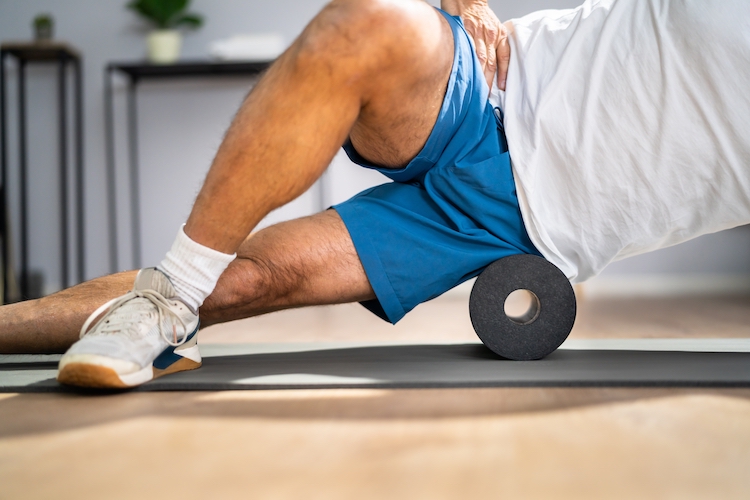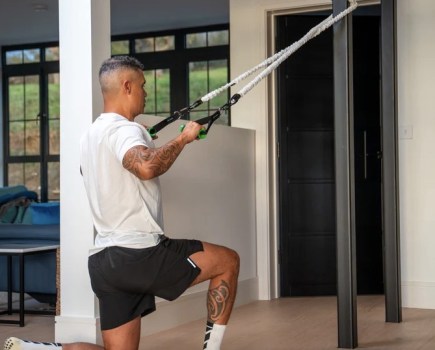Looking for a tool to help you bounce back post-workout? We think these are some of the best foam rollers for the job.
The best foam rollers may look like simple tubes of foam or rubber, but like decent resistance bands they are surprisingly effective. Foam rolling is is more than an extension of your stretching routine too. Used regularly, it can be an invaluable addition for muscle recovery post-workout, ensuring you’re primed and ready for your next session.
Much like stretching, foam rollers can help keep your joints supple and enhance your overall mobility. But any foam roller with a textured or three-dimensional surface can really help work knots out of tired or troublesome muscles. So look for rollers with a combination of ridges and knobs if you’re looking for a deeper tissue massage.
Crucially, you don’t need to hit the gym to benefit from a foam roller. Regular use, regardless of your activity level, can significantly improve your flexibility and ease muscle tension.
Our team have put the best foam rollers to the test, and we’re here to help you find the perfect one to ramp up your recovery.
Why you can trust Men’s Fitness
We spend hours testing every product or service we review, so you can be sure you’re buying the best. Our team of bike reviewers included experienced product testers, journalists and fitness writers – as well as the core MF team – who know exactly what sets the best products apart from the rest. Find out more about how we test.
This is the best foam roller we’ve tried in 2025
You’d be forgiven for thinking all foam rollers are effectively the same. But a new generation of recovery tools are upping the ante, because they add massage gun-like vibration benefits to deep tissue massage. One such roller is the Pulseroll Vyb Pro, with remote-controllable vibration settings up to 3,500rpm and a six-hour battery life. But it gets the basics right, too, with a firm textured surface to help work out knots with effective foam roller moves.
Other foam roller recommendations
| Best for working tight muscles | We found the Gymshark Foam Roller had the most pronounced ridges and nodules of any roller on test, as well as just the right level of foam density to massage tender muscles without having you wincing in pain. |
| Best for back massages | The Amazon Basics Foam Roller is available in a few lengths, the largest being 90cm – making it one of the widest rollers around. So while it may not have the most textured of surfaces, it’s great for rolling out knots in backs and shoulders. |
| Best budget roller | It’s difficult to justify shelling out north of $50 for what is essentially a cylinder of foam. So it’s refreshing to find a budget option like the Umi Foam Roller that gets the job done and doesn’t leave you out of pocket. |
These are the best foam rollers
1. Pulseroll Vyb Pro Vibrating Foam Roller
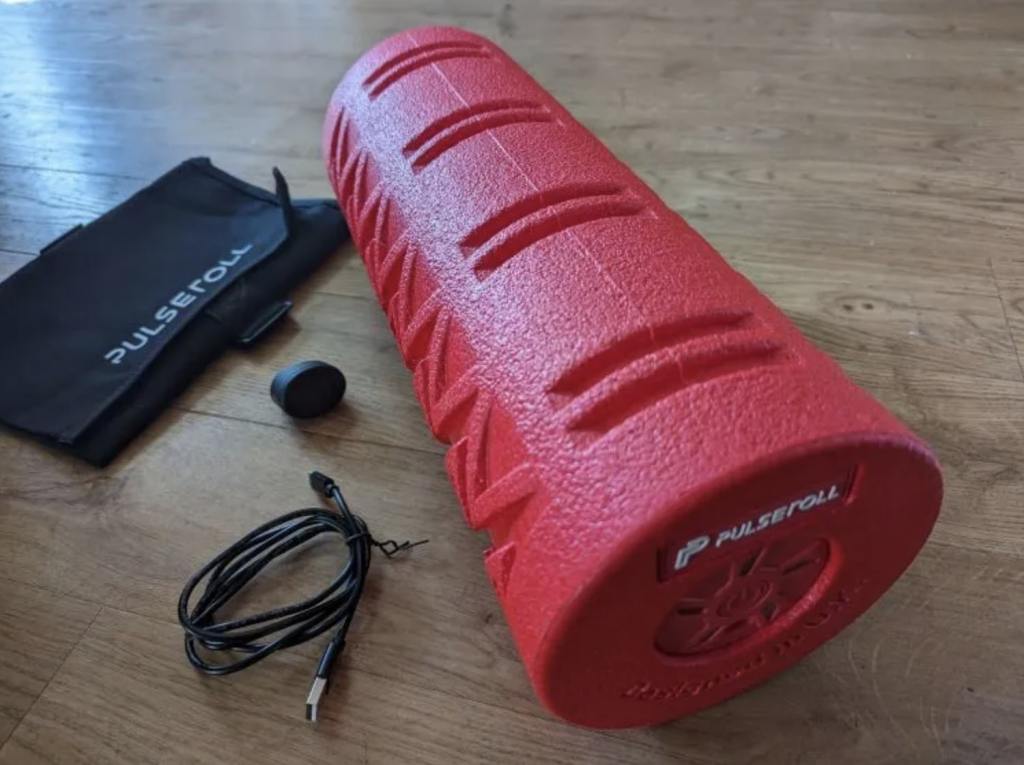
Men’s Fitness verdict
The Pulseroll Vyb Pro Foam Roller is an all-singing, all-dancing vibrating foam roller that pulverises the competition. It may seem pricey but you’re effectively getting a mini massage gun too.- Five effective vibration modes
- Easy-to-use remote control
- Robust build quality
- Highest speed may be too much for some
- No way to check charge level
| Features | 5 vibration speeds, remote control, USB chargeable |
| Length | 15in / 38cm |
| Colors | Black, red |
| Warranty | 2 years |
It might be the most expensive foam roller by far, but the Pulseroll Vyb Pro also pulverizes the competition when it comes to deep tissue massage. Featuring four speed settings between 1,200rpm and 3,500rpm, there’s also a pulse mode that moves between 1,500rpm and 3,500rpm. A finger-mounted remote control makes changing speeds a breeze and a single USB charge will give you six hours of use.
- Read our full Pulseroll Vyb Pro Foam Roller review
2. Gymshark Foam Roller

Men’s Fitness verdict
It may look bland, but Gymshark gets the basics right with a roller that really hits the spot. Those three different textures give you plenty of massaging variability too.- Three different textures
- Plush foam
- Affordable
- Only one color
- A little too firm to use on tight, tender calves
| Material | 70% EVA, 30% PVC |
| Length | 13in / 33cm |
| Colors | Black |
UK fitness firm Gymshark has a foam roller in its arsenal of accessories and, despite looking like most other budget rollers on the market, does an exceptional massaging job. Three patterns of ribs and nodules get into knotted areas well, and the plush foam doesn’t feel too firm against tender calves. Wrap-around foam edges mean you won’t accidentally hit hard plastic when working on the ends of the roller either.
- Read our full Gymshark Foam Roller review
3. Umi Foam Roller
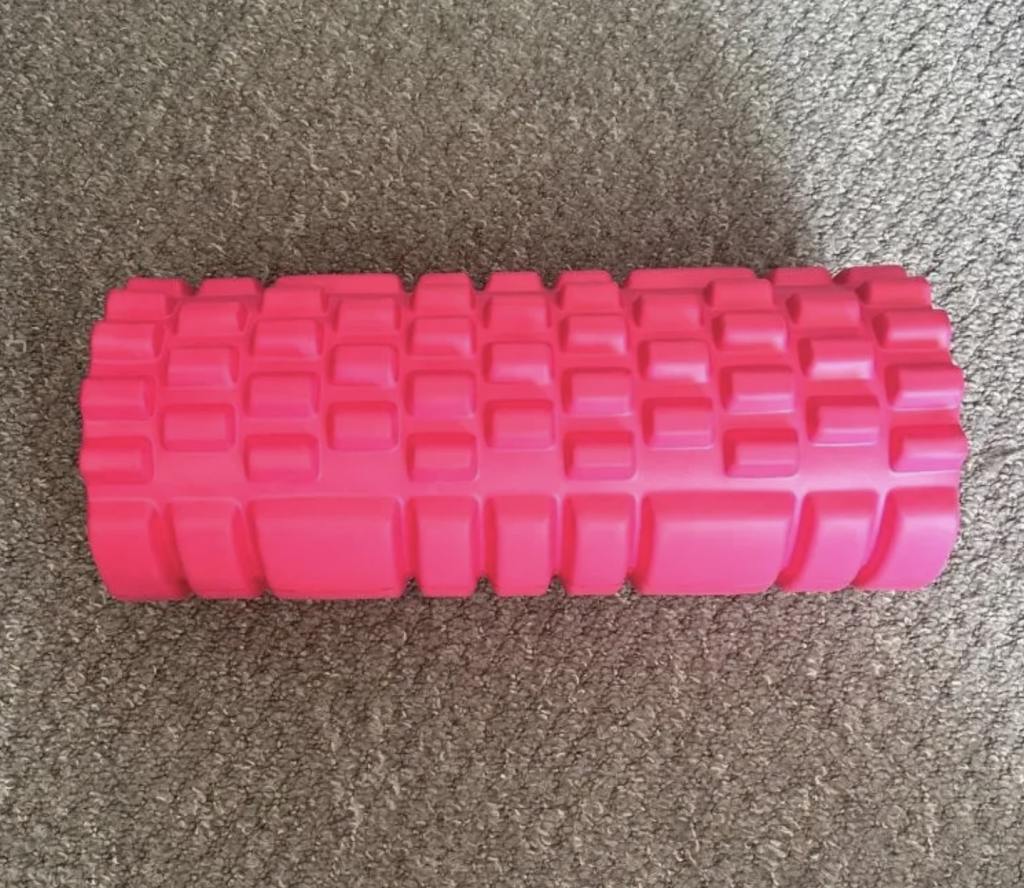
Men’s Fitness verdict
The Umi Foam Roller shows that even low-priced rolling options with varying texture can help you massage tired or knotted muscles. That hard foam can be unforgiving at first though.- Three different textures
- Lightweight yet sturdy
- Affordable
- Hard foam takes some getting used to
- Too short for full back or double-leg rolls
| Foam thickness | 0.8in / 20mm |
| Length | 13in / 33cm |
| Colors | Black, green, pink, purple |
Another inexpensive option, the Umi roller has deep, accentuated nodules for really working out knotted muscles. There are longer ‘fingers’ and larger blocks too, mimicking the palm of a hand, giving you plenty of options, whatever area you’re working on. A good choice for keeping in your kit bag and cheap enough to have another in your home fitness studio too.
- Read our full Umi Foam Roller review
4. Technogym Foam Roller
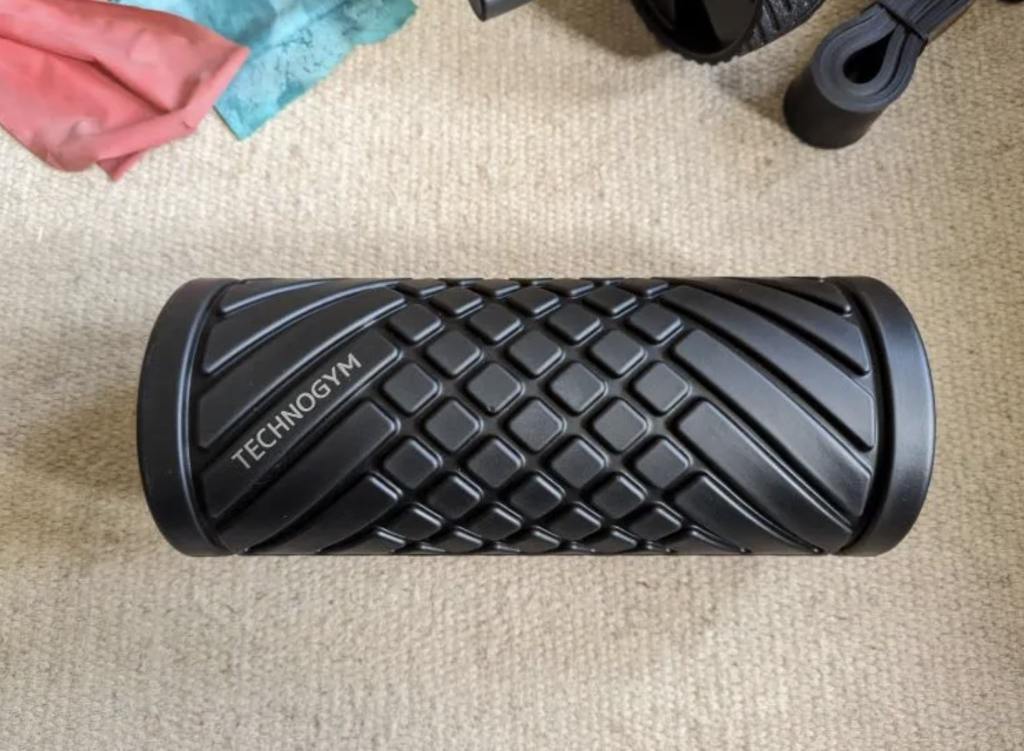
Men’s Fitness verdict
Technogym takes a different design approach with its slimline roller but we’re not sure it justifies the high price. Still, three textures and varying firmness make it a useful recovery tool.- Three different textures
- Lightweight yet sturdy
- Varying firmness
- One of the more expensive options
- Ridges not pronounced enough for deep massage
| Foam thickness | 0.3in / 8mm |
| Length | 13in / 33cm |
| Color | Black |
Technogym’s foam roller employs an unusual diagonal pattern of grooves and bumps with three distinct areas for effective tissue massage. It’s a useful portable tool as it’s compact enough to tuck into a gym bag. Though the foam is fairly shallow, the Technogym roller has a trick up its sleeve – the centre is firmer than the outside, allowing you to introduce a good deal of variety to your post-gym recovery work.
- Read our full Technogym Foam Roller review
5. Amazon Basics Foam Roller

Men’s Fitness verdict
This smooth roller comes in three useful sizes, with even the smallest large enough for full back rolls. The lack of texture means it’s not the best for deep tissue massage though.- Robust and hard-wearing
- Available in three sizes
- Even the shortest size is longer than most
- Overpriced (in the UK)
- A little too firm for many beginners
| Material | Polypropylene |
| Length | 18in / 45cm; 24in / 60cm; 36in / 90cm |
| Colors | Black, speckled grey |
Though any texture on the Amazon Basics roller is conspicuous by its absence, this budget roller’s USP is its length. Available in three sizes, even the shortest length is longer that your average roller, and the largest is positively huge. Not the greatest for portability then, but it offers great coverage for performing full-length back rolls. If that’s one of your weak spots, this one is well worth a look.
- Read our full Amazon Basics Foam Roller review
How we tested the best foam rollers
Though most people predominantly use foam rollers for massaging tight hamstring and calf muscles, they can be used for every body part. So our testers used each roller after exercise for these best foam roller moves. They massaged and manipulated the tissue and muscles in their feet, shins, adductors and quads, as well as their upper and lower back, pecs and lats. They also used these moves in conjunction with complimentary stretching exercises, such as the best hip stretches and best shoulder stretches.
Benefits of foam rolling
Foam rolling is based on the principle of myofascial release: the freeing up of your fascia (the thin connective tissue that holds everything in place) to reduce stiffness and improve mobility. Rollers do that primarily with knobs and nodules of various sizes that can manipulate your deep tissue.
By applying targeted pressure to muscles and fascia, foam rolling helps break up knots and adhesions, increasing blood flow and oxygen to the area. This process can reduce delayed onset muscle soreness (DOMS) and improve range of motion. It activates mechanoreceptors and stimulates the nervous system, helping muscles relax. By incorporating foam rolling into your routine, you can enhance recovery, prevent injuries, and maintain optimal muscle performance.
What makes a good foam roller?
A good foam roller should have several key features to ensure effectiveness and durability. Here’s what to look for:
- Density: The right density depends on your needs. Soft foam rollers are gentler and best for beginners or sensitive muscles, while firm rollers provide deeper, more intense pressure, suitable for experienced users or tougher muscle areas.
- Material: High-density EVA foam or EPP foam are popular for their durability and ability to retain shape over time. Avoid cheap materials that can break down or lose effectiveness quickly.
- Surface Texture: Rollers come in various textures, from smooth to highly textured with ridges and knobs. Textured rollers target specific muscle knots and provide a deeper tissue massage. Smooth rollers offer an even, gentle pressure ideal for full body use.
- Size: Longer rollers (24-36 inches) are versatile and good for back, IT band, and larger muscle groups. Smaller rollers (12-24 inches) offer portability and are great for targeted areas like calves and arms.
- Durability: High-quality foam rollers should withstand regular use without breaking down. Look for reputable brands or products with good reviews for longevity.
- Price: While you don’t necessarily need the most expensive foam roller, very cheap options might not provide the same benefits or durability.
A good foam roller combines your specific needs with high-quality materials to support your fitness recovery routine effectively.
Some, like the Pulseroll Vyb Pro and Theragun Wave Roller, are USB chargeable so they can vibrate as you roll. That can help them act almost like the best massage guns as well as a foam roller, making massaging even more effective.
Related content:

